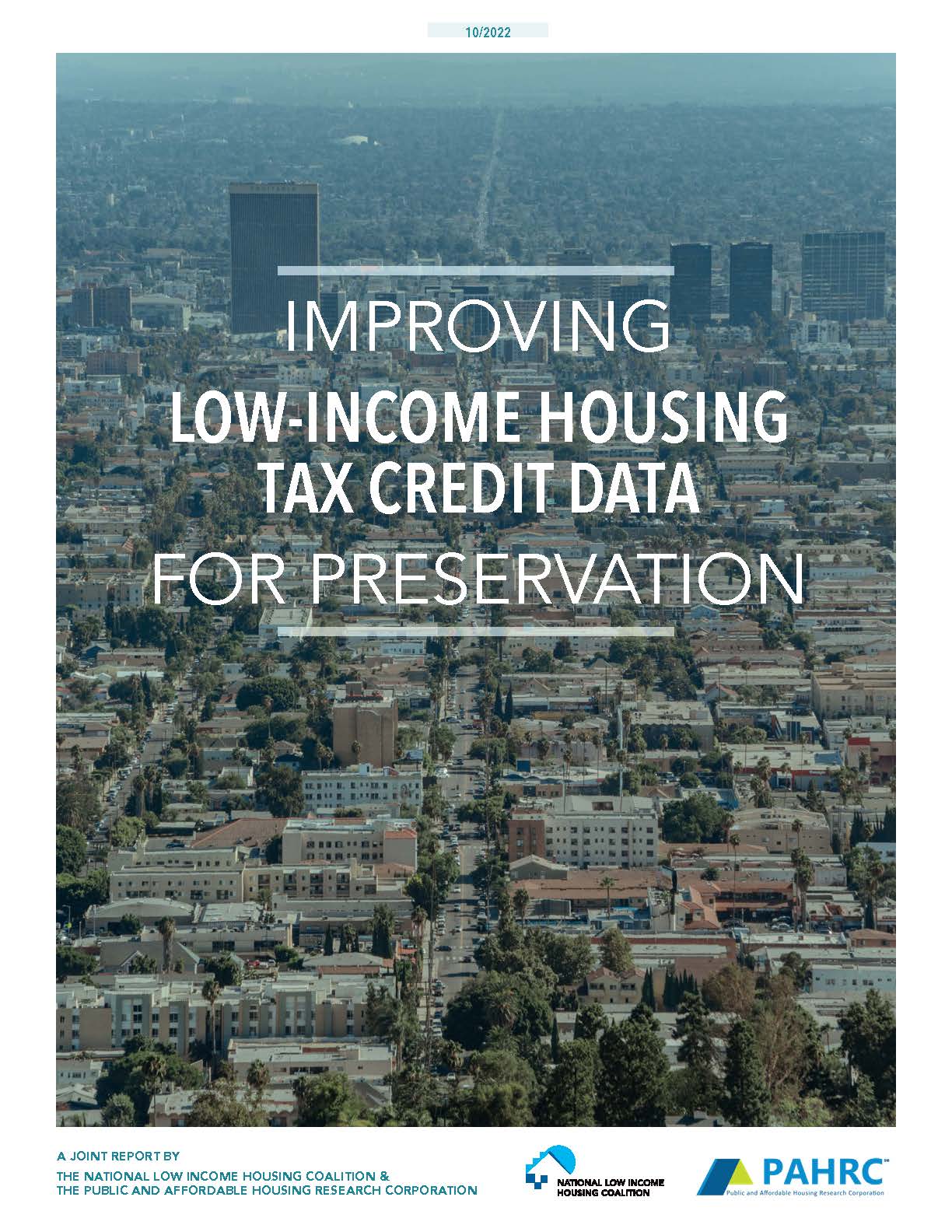Improving Low-Income Housing Tax Credit Data for Preservation – New Report by NLIHC and PAHRC!
Oct 06, 2022
NLIHC and the Public and Affordable Housing Research Corporation (PAHRC) released today a joint report, Improving Low-Income Housing Tax Credit Data for Preservation. The report documents the need for improvements to both the quality of property-level Low-Income Housing Tax Credit (LIHTC) data and public access to these data for preservation. According to the report, LIHTC data must be improved to support the identification of specific properties where preservation efforts are needed to protect tenants and to better understand the nature and scale of preservation risks facing the LIHTC stock.
HUD’s LIHTC Database is an essential public resource for data on LIHTC properties. However, HUD faces challenges incorporating key data into its database for assessing LIHTC preservation risks, such as data on restriction end dates, qualified contract (QC) waivers, and information on ownership changes. The new report examines the extent to which housing finance agencies (HFAs) provide these data at the state and local levels and analyzes the challenges they encounter collecting, maintaining, and reporting LIHTC property data to HUD and the wider public. Based on a comprehensive review of HFA websites in all 50 states and the District of Columbia, as well as interviews with staff from 25 HFAs, the report finds:
- Ninety-three percent of HFAs post some form of property-level LIHTC data on their websites.
- The property-level data publicly posted by HFAs are largely limited to what these agencies already report to HUD’s LIHTC Database. Key preservation indicators, such as restriction end dates, the presence of QC waivers, and up-to-date information on property ownership, are largely absent from HFA websites.
- LIHTC data are often siloed across various teams and systems within HFAs, creating challenges for them when it comes to providing comprehensive information to stakeholders about specific LIHTC properties. The fact that data are siloed can also complicate the construction of centralized, property-level databases.
- Many HFAs appear to face limitations in their staffing capacity and technology that inhibit their ability to streamline or automate the collection and reporting of LIHTC data and develop centralized, property-level databases that include key preservation indicators concerning their LIHTC stock.
- Limited oversight and enforcement power impede the ability of both HFAs and HUD to collect more timely and robust property-level LIHTC data that can better inform preservation efforts.
